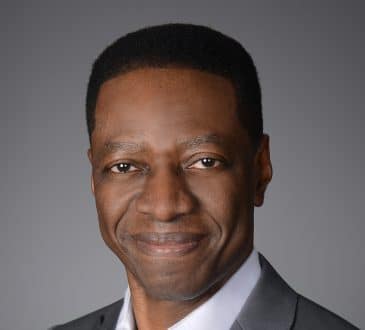The first 100 days in the life of a CEO

Let me be clear from the onset: the 100 days mark is an arbitrary timestamp and so, it does not represent a finish line for what the CEO is meant to achieve at the helm of the company.How would you see your first 100 days as a CEO? You were asked this very question (or a variation of it) at the final Board interview and judging by the fact that you got the job, it is fair to assume that the Board was content with your answer.
If you were brought into the role from outside the company, it is likely that the Board was looking for a leader with a fresh perspective, who will rock the boat and have a transformative role in leading the Company. By now, you would have acquired a wealth of information about the business, its strategy (as it stands today) and overall operational performance. You may also start getting some idea of the culture, a process which is a bit trickier since it goes beyond the values plastered on the wall.
The actions you take during your initial three months or so are significant and will be watched carefully by a number of internal and external stakeholders, not just by your Board of Directors.
However, through the actions you take over the first 3 months, make sure you do not set precedents that curb your range of options for the future.
You are being watched.
Assume that your actions and behaviours are broadcast 24 hrs/day on a 100” screen TV that is pinned in the middle of the Company. That frame of mind gives you some perspective on people’s anxieties during these times of change.
Evolutionary theorists will tell you that species minimise the amount of energy they spent during times of radical change. And so, your colleagues (from EXCOM to the most junior team member) will ask themselves the question: how does this affect me?
Your transparency, communications skills and the ability to facilitate transversal dialogue are of paramount importance in this process. More about this later.
Understand your internal and external ecosystem
That is,
- ask for all documents that provided input to corporate strategy and strategic planning process,
- obtain and study organizational charts (that cover ALL levels in the business),
- study and review all financial information with your CFO
- review previous management consulting and advisory work that was done by external consultants,
- meet with your executive management team (ExCom) as a group and individually and make sure you state that some changes will be forthcoming as you re-shape the business. Acquire a granular understanding of their roles, responsibilities and accountabilities. Remember: responsibilities can be shared, accountabilities cannot.
- get to know (informally) other people in the business at less senior levels and take the time to talk to them as well, finding out where they think the business is, or should be going
- get to know your HR and marketing team
- acquire a good understanding of clients and who among them make up the majority of your revenue. You may have 10-15 clients that make up over 70% of Company’s revenue: ask your marketing team to organise appointments and visit them ALL.
Analyse-analyse-analyse
Analyse the game.
- Stop all discretionary spending until a full strategic review of the business is complete.
- Identify the value creators, value destroyers and complexity makers and how much capital they access
- Understand the sales process and make sure you have no strategic dissonance in the sales/BD area.
- Identify a few things that need to be changed quickly and make those changes.
- Re-shape your Executive Committee (EXCOM) but also form an “extended leadership team” so that you facilitate transversal dialogue within the business
- Identify staff that are likely to be resistant to your agenda and have a candid discussion. Remember that staff who were resistant to former CEO’s agenda may not necessarily be opposing your agenda. To succeed you will need a stable guiding coalition, but also one in which courageous conversations are sought and appreciated.
- Identify those leaders that are prone to “sensing” and “scanning the ecosystem” beyond your immediate market and industry sectors. Co-opt them in your leadership team to add dynamic capabilities to your business.
- Identify those with grand ideas, the aggregators and asset orchestrators and those who have the ability to sell holistic solutions not just discrete services.
- Your ExCom needs to be in tune with what you want to achieve and how.
Set two rules to start with:
#1: no major proposal (excl. strategic initiatives) should reach you if you can’t endorse it wholeheartedly and,
#2: if you overrule a proposal that cleared organizational hurdles, that is a sign of wider organizational failure.
Formal communication time
Make sure you develop a speech to the team that, includes:
- what your values are,
- what the team should expect from you,
- what you expect from the team and
- need for change clearly articulated and some of the forthcoming changes
If feasible (geography-wise and timezone) organise a teleconference and give this speech so that everyone has the opportunity to hear it (and possible have some Q&A).
By holding a short Q&A session, you project the transparency and confidence that perhaps was not on display with your predecessor.
Craft a letter summarizing the most important aspects of your speech (or the entire speech for that matter) and make it available via Intranet to everyone.
Board
The most compelling piece of advice comes from a friend of mine, former Chairman of a Big4 and that is:
Never surprise the Chairperson.
I would go even farther and say,
Never surprise the Board.
Decide the frequency and style of Board Papers. Think like a Director in negotiating the style.
Understand the roles of each Board member, their strengths in particular.
As a CEO your aim is to keep the Chairperson appraised at all times and work with him/her on the more sensitive changes you intend to make.
If your direct reports (executive directors of the business) sit also on the Board, be aware of the possible voting conflict and take steps to avoid the echo-chamber effect. This duality is less encountered in a publicly listed company though.
Obtain buy-in for your new agenda.
New agenda
This is the agenda that will guide the company into the future.
From my experience, people don’t want to follow a leader into the future they want to co-create it.
- STRATEGY: By now, you are in the position to re-set and amend the strategy. The new strategy should be clearly communicated to staff and externally to investors and stakeholders
- VALUES: The values and culture are the domain of the CEO. They underpin the vision and need to be communicated widely and unambiguously. It is your duty to kick-off this process as soon as possible.
Set new operational benchmarks for business, labour and capital efficiency and communicate them.
Set new strategy benchmarks. You don’t want people to be afraid to fail, but rather “fail fast and pivot”.
Have you read?
Best places to visit in France, 2020.
Best Places To Visit In Australia And The Pacific.
Best Wedding Venues In Mauritius
Best Places To Visit In Turkey
Best Places to Visit in Central And South America.
Add CEOWORLD magazine to your Google News feed.
Follow CEOWORLD magazine headlines on: Google News, LinkedIn, Twitter, and Facebook.
This report/news/ranking/statistics has been prepared only for general guidance on matters of interest and does not constitute professional advice. You should not act upon the information contained in this publication without obtaining specific professional advice. No representation or warranty (express or implied) is given as to the accuracy or completeness of the information contained in this publication, and, to the extent permitted by law, CEOWORLD magazine does not accept or assume any liability, responsibility or duty of care for any consequences of you or anyone else acting, or refraining to act, in reliance on the information contained in this publication or for any decision based on it.
Copyright 2024 The CEOWORLD magazine. All rights reserved. This material (and any extract from it) must not be copied, redistributed or placed on any website, without CEOWORLD magazine' prior written consent. For media queries, please contact: info@ceoworld.biz
SUBSCRIBE NEWSLETTER








